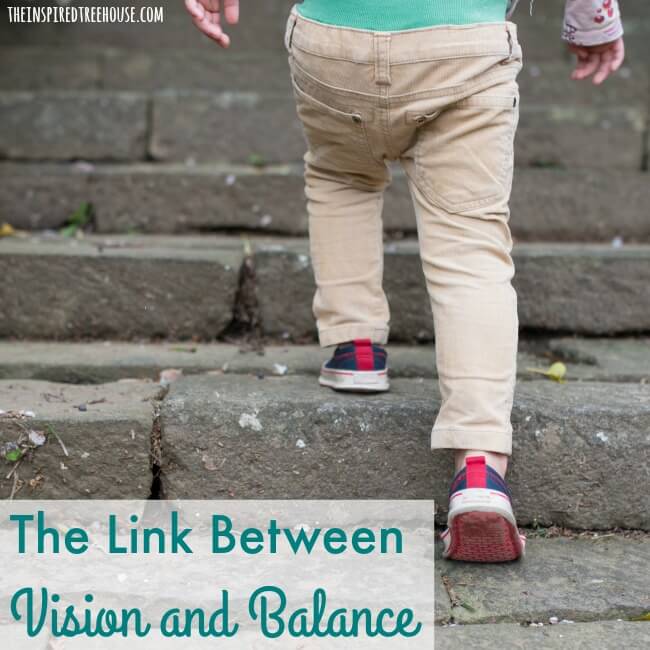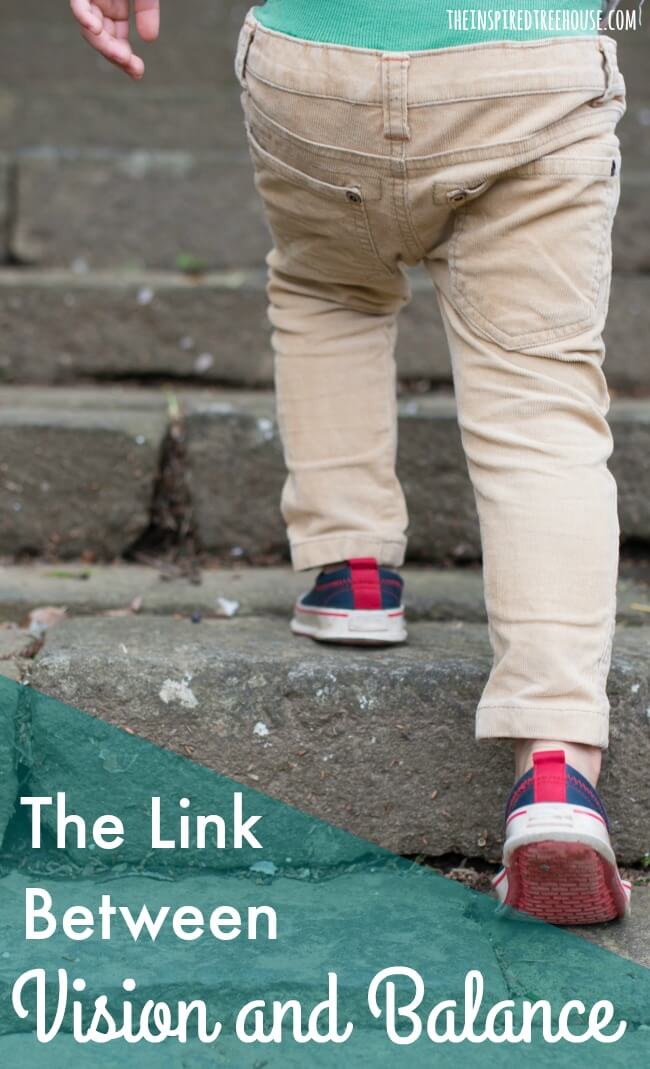Learn more about the link between vision and balance from a pediatric physical therapist’s point of view.
A preschooler who frequently falls and loses his balance. A 7-year-old who hesitates at the top of the stairs. A child who can’t seem to catch a ball or connect on a kick. While these may all seem like clear cut gross motor problems, sometimes, the issues I see in children often have less to do with motor skills than they do with vision.
Often, problems with the visual system are not detected until they have impacted overall development. And, it is very difficult to differentiate between a true motor issue and one that has been significantly impacted by a visual deficit without proper intervention from eye specialists.
How to Tell When Vision is Impacting Motor Skills
How might we, as therapists, help identify a child with vision difficulties by looking at their motor skills? We can look for the following red flags:
-Insecurity at the top of a flight of stairs — slinking back, inching a foot toward the top step, having difficulty judging the distance to where the stairs begin and how far their foot needs to go before getting to a step (depth perception).
-Seeming off-balance walking through hallways or classrooms
-Difficulty with hand-eye coordination activities — catching/kicking a ball, tapping a balloon
The Link Between Vision and Balance
Many studies have established the link between poor vision and decreased balance. Let’s explore this connection.
Balance, a key component of motor development, is reliant on 3 sensory motor systems working together: the vestibular system, the proprioceptive system and the visual system.
Proprioception: The body has little pressure points that send signals to the brain about where your body is in space. It tells you things like when your foot hits the ground and when your head moves up and down.
The vestibular system: This system tells the brain that you are moving by the movement of liquid through the semicircular canals in the ear. If your body makes a quick turn to dodge an incoming attack from a playground ball, your vestibular system sends a message to your brain and your brain tells your muscles to react and keep you balanced.
Vision: Your eyes have little nerve endings with light-sensitive cells called rods and cones. These send signals to the brain through the optic nerve and the brain uses the signals to tell us what we see by creating visual images that can be different in each eye. The variants in the images that our eyes see tell us how close an object is to us. This is very important for maintaining balance. If your visual system didn’t work properly, you would never know that your body needs to lower about 8” to get to that next step on a flight of stairs.
It is easy to see how an issue with one of these systems can cause a major issue with balance.
If your child or a child you work with is having difficulty with motor skills and things just don’t seem to be getting better with exposure to your usual therapy tools, think about a vision screening. It might make a huge difference in their overall stability and their confidence with movement!
Check out some of our other balance activities:
How to Use a Balance Board With Kids
How to Practice Single Leg Stance [FREE Printable]
Christmas Tree Balance Activity
Balance Practice Ideas for Kids


Latest posts by Lauren Drobnjak (see all)
- End of the Year Gifts for Therapists - April 14, 2024
- Playful Therapy Posters to Spruce Up Your Room - March 30, 2024
- How to Help a Baby Crawl & Creative Crawling Patterns We See in Therapy - March 19, 2024

